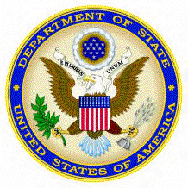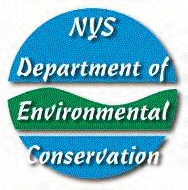An Inventory of Papers in Syracuse University Libraries© Communications & Writings
[*NYCHS Webmaster Note:
. . . .
[LETTERBOOKS] The last box of correspondence . . . holds transcripts of letters sent home by William Thomas Davis during a world tour. He was a companion of Thomas Mott Osborne during their travels in 1877-1878. . . .
SPEECHES
Early in his foreign service career, Lithgow found himself investigating conditions encountered by prisoners but not the category of inmates with whom his father dealt at Sing Sing. Rather, these were POWs -- captured Allied soldiers -- in German camps. Before the U.S. entered WWI, Lithgow and other staffers at the American embassy in Berlin would inspect and report on the camps' compliance or noncompliance with standards for humane treatment under various international treaties and conventions.
Despite serving at top levels of government, he tended to stay out of the limelight. While perhaps his most important work was done in the international sphere, the Lithgow legacy most blest to this day involved his conservation work in and for New York State.
For example, avid Catskill Mountains fly-fishermen who consider the Beaverkill River a sacred place credit his foresight for why the lower Beaverkill remains open to fishermen. As state conservation commissioner in the 1930s, Lithgow used a portion of fishing license fees to buy up fishing rights of private landowners along the river. The 23-mile stretch is considered the only uninterrupted public fishing water of appreciable size in the Catskills.
Conservation Commissioner Lithgow Osborne is revered for his role at the 1938 NYS Constitutional Convention where he helped thwart the private interests who sought to weaken the "forever wild" provisions concerning the Forest Preserve. Actually his first name was Arthur. Lithgow was his "middle" name that he came to use instead. His mother, Agnes Devens Osborne, had a brother Arthur Lithgow Devens. Their father also was Arthur Lithgow Devens whose brother (their uncle) was Charles Devens, the Civil War general and U.S. Attorney General noted on Page 9 of this web presentation.
[Image selection & caption by NYCHS webmaster]
WRITINGS
The major contributors are Agnes Devens Osborne, David Munson Osborne, Eliza Osborne, Lithgow Osborne, Thomas Mott Osborne -- all of whom have diaries here -- and various inmates of Auburn, Portsmouth, and Sing Sing prisons.
A substantial part of this section is taken up by the writings of Thomas Mott Osborne. The materials are in draft and printed form. Among his published works found here in various stages of draft are the articles and essays
There are unpublished articles, film scripts and plays, as well chapter drafts of a book, variously entitled, Reforming Sing Sing and Politics and Prisons. Near completion at the time of his death in 1926, the book is an extended narrative and defense of his tenure as warden of Sing Sing Prison.
There are several diaries and journals. The diaries were kept
by
Journals are here distinguished from diaries in that they are often transcribed, do not form units coinciding with the beginning and end of the calendar year and always focus on a activity or event. The writing may range over many but the theme continually reverts to a central occupation as travel or diplomacy, and the journal closes with the termination of that activity. The travel journals were written
Some journals cover a shorter period, such as that of David Wright for March, 1828. The most extended are those of Thomas Mott Osborne as head of D. M. Osborne & Company (1891-1896), and Lithgow Osborne (1914-1917), first as personal secretary to Ambassador James W. Gerard, and later as third secretary of the American Embassy in Berlin. . . .
Other works in the writings section include
|
| The Osborne Family Inventory text 1971 by Syracuse University Libraries |


 One of his rare moments of high visibility came in the Nobel Institute auditorium, Oslo, the afternoon of Dec. 10, 1945, when as U.S. Ambassador Extraordinary and Plenipotentiary to Norway, Lithgow accepted for the "Father of the United Nations" Cordell Hull the 1945 Nobel Prize for Peace. Osborne delivered the brief acceptance speech on behalf of the former Secretary of State who was too ill to participate personally.
One of his rare moments of high visibility came in the Nobel Institute auditorium, Oslo, the afternoon of Dec. 10, 1945, when as U.S. Ambassador Extraordinary and Plenipotentiary to Norway, Lithgow accepted for the "Father of the United Nations" Cordell Hull the 1945 Nobel Prize for Peace. Osborne delivered the brief acceptance speech on behalf of the former Secretary of State who was too ill to participate personally.
 Osborne later became president of the Association for the Protection of the Adirondacks. He is counted among those who led the association during the mid-years of the 20th century in vigorous preservationist activity on behalf of the forest region.
Osborne later became president of the Association for the Protection of the Adirondacks. He is counted among those who led the association during the mid-years of the 20th century in vigorous preservationist activity on behalf of the forest region.
